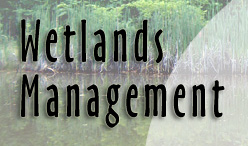|
|
|
|
|
|
Wetland types |
|
Salt marshes |
|
Ecology |
page 4 of 7 |
Plant species found in salt marshes must be able to survive
intervals of complete inundation as well as periods of
dryness. Changes in water salinity and saline soils must
also be managed. For these reasons, plant species diversity
is low. Grasses and some herbaceous perennials are typically
found in salt marshes. To deal with the ever-fluctuating
conditions many salt marsh plants have physiological
adaptations for salt excretion, heavy stems, and small
leaves.
Roots of salt marsh plants help stabilize the sandy
substrate and trap and hold nutrients and detritus that flow
through with each tidal cycle. This detritus trap helps feed
bacteria, algae, and invertebrates. These root tangles also
provide critical refuge for small fish and other animals.
Animals that rely on salt marshes for shelter from predators
include fiddler crabs, shrimp, marsh snails, and marsh
mussels. Some aquatic animals move in and out of salt
marshes with the tide while others remain and survive in
shallow pools created by depressions. Salt marshes provide
critical habitat for the larval or juvenile life stages of
many animals including blue crab, white shrimp and spot tail
bass. Without the “nursery” function that salt marshes
provide many animals would not reach adulthood.
Salt marshes provide habitat for other animals like diamondback terrapins, American alligators, red-winged black bird,
herons, egrets, and clapper rail. |
|

